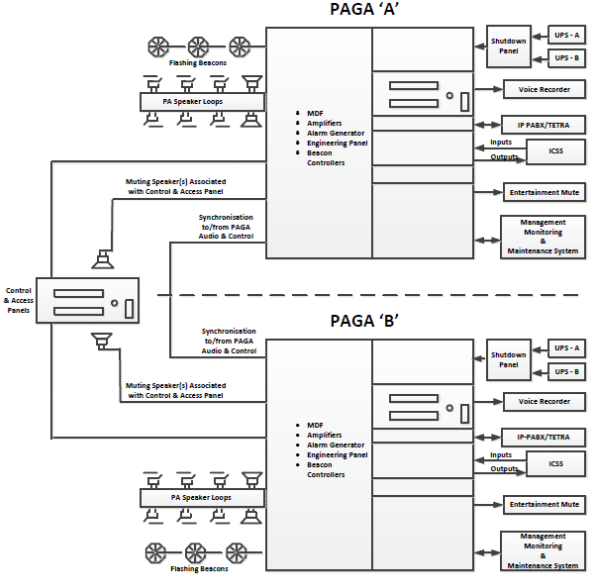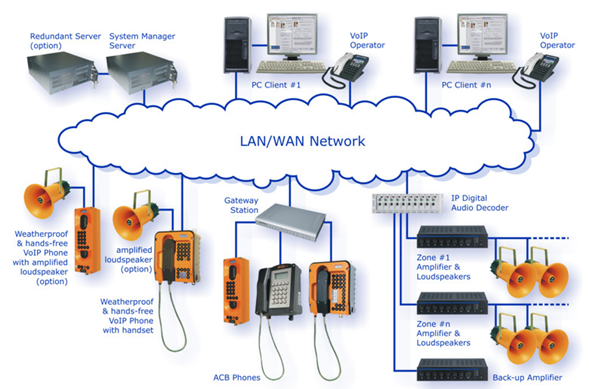TASHKOO PAGA Systems
Public Address and General Alarm System (PAGA) is a Safety-Critical’ electronic system that is used to alert personnel of dangerous and hazardous situations during any site incident and/or emergency. PAGA system would be used for notifying personnel of the appropriate actions to take during a ‘Safety-Critical’ hazardous situation and particularly for a site evacuation. The system is also used to broadcast routine voice messages. PAGA system should broadcast alarms to all zones of the site simultaneously. The system should comply with BS EN 60849 and IEC 60268.
PAGA system broadcasts audible voice messages and audible alarms into all areas of the site where personnel are normally present and to all assembly points. In noisy areas where audible alarms cannot be heard because of machinery is running and the ambient sound noise level is high (normally more than 85dB), also visual alarms would be also broadcasted.
A typical Public Address and General Alarm System uses microphones, sound amplifiers and alarm tone generators forthe manual and automatic distribution of voice announcements and audible/visual alarms to loudspeakers and flashing lamp beacons.
For industrial sites and applications, the PAGA system shall be designed as a fully redundant system so full coverage is afforded if either the A or B system is isolated or non-functioning. In addition, a failure on the A-system shall not reduce the performance of the B-system and vice versa. No single failure in systems, equipment or cabling networks or any single localised event shall cause a reduction of audio and flashing beacon coverage to any area.

The Central equipment for the PAGA A-system and B-system as well as MDF and power supplies for the respective systems shall be located in separate areas of the facility with each installed in safe/secure protected locations away from the likelihood of any physical disturbances or any localised damaged that may occur such as the falling of physical objects or other types of physical disturbances /disruptions caused by Gas leak, utility breakdown, fire or explosion, water/seismic/fluid contamination/other external incidents. The location of each area shall have sufficient separation such that any incident in one location would be unlikely to affect the other.

